Sharks are not mammals; sharks are fish. Sharks lack mammalian characteristics such as hair and lungs, and do not produce milk. Being fish, sharks have scales and fins, and breathe using gills. Sharks belong to the class Chondrichthyes, whereas mammals belong to the class Mammalia.
Although sharks do share some physical characteristics with mammals (especially marine mammals such as whales and dolphins), they are very different types of animal.
On this page you'll discover why sharks are fish rather than mammals, and learn some amazing facts about both groups of animals along the way...
Is A Shark A Mammal?
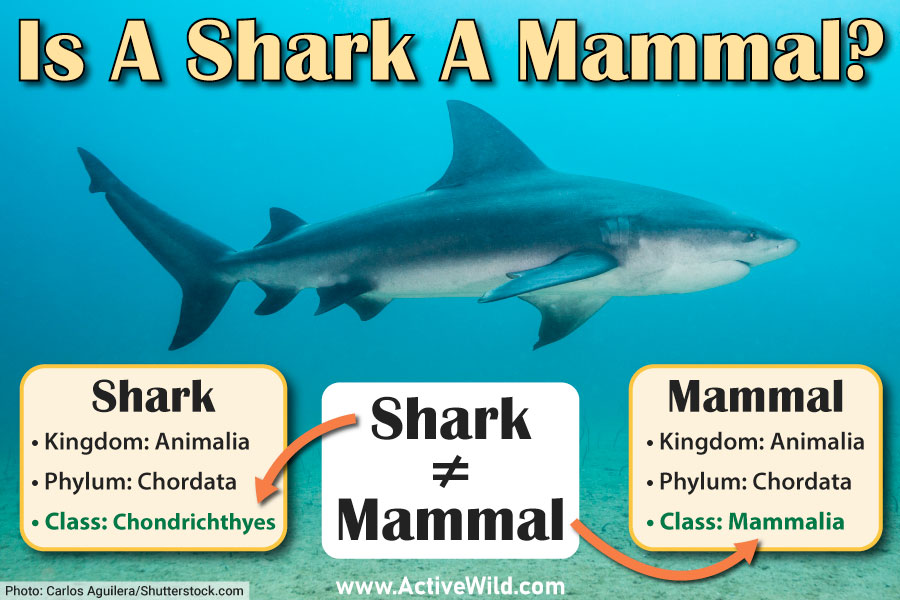
A shark is not a mammal, it is a fish. Although there are some similarities between large shark species and aquatic mammals such as whales, the two groups of animals are not related and belong to entirely different classes. A shark is a member of the class Chondrichthyes (one of three classes of fish); a mammal is a member of the class Mammalia.
Differences Between Sharks and Fish
- Sharks "breathe" with gills.
- Mammals breathe with lungs.
- A shark has scales (mammals do not)
- Sharks lack mammalian characteristics such as hair, mammary glands (for producing milk), and a neocortex (part of a mammal's brain)
- A shark's skeleton is made of cartilage.
- A mammal's skeleton is made of bone.
- (Most) sharks are cold-blooded.
- All mammals are warm-blooded.
- All of a living shark's ancestors are aquatic animals.
- The ancestors of every living mammal (even sea mammals such as whales, dolphins and manatees) include animals that lived on land.
Sharks and mammals belong to different classes
A class is a group of related animals; one of several different groups that biologists use to classify living things.
You can find out more about animal classification on this page: Animal Classification
Sharks belong to the class Chondrichthyes, which is one of three classes of living fish (see below)
Mammals belong to the class Mammalia. There are around 6,025 mammal species. (Source)
The Three Classes Of Living Fish
- Chondrichthyes (cartilaginous fish): fish such as sharks, rays and skates
- Agnatha (jawless fish): fish such as hagfish and lampreys
- Osteichthyes (bony fish): fish such as cod, salmon, carp, bass, eels, etc.
There are other classes of fish, but they contain only extinct species.
You can find out more about fish on this page: Fish - The Ultimate Guide
The class Chondrichthyes itself is divided into two subclasses: Elasmobranchii, which contains all sharks, rays, skates and sawfish; and Holocephali, which contains fish known as chimaeras, which are mainly deep-sea species.
Shark Species
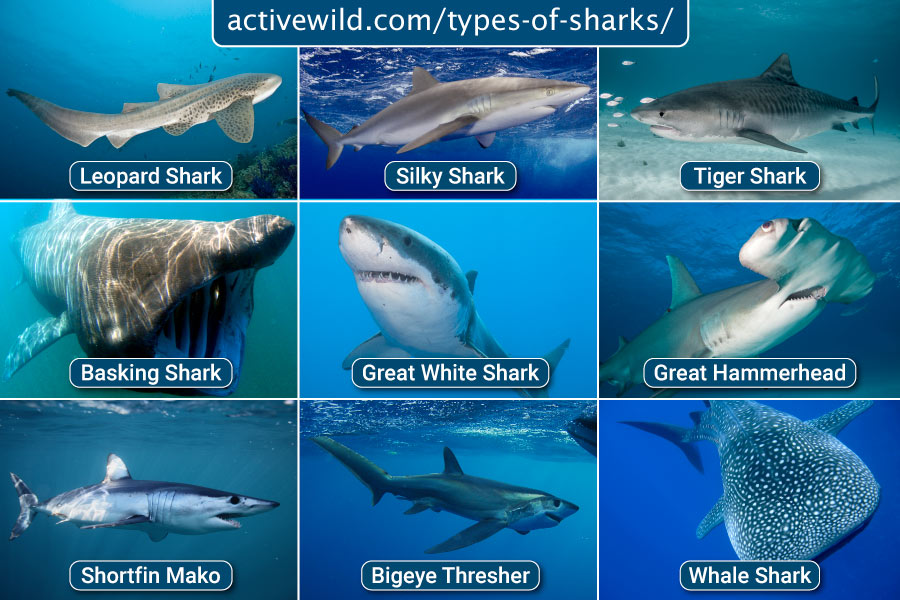
There are around 530 different species of sharks. Sharks are far outnumbered by the bony fish of class Osteichthyes, of which there are around 28,000 species!
You can find out more about the different types of sharks on this page: Types of Sharks with Pictures and Facts
You can find out more about the different types of fish on this page: Types of Fish with Pictures & Facts
What Is A Mammal?

Mammals are a large group of diverse animals, all of which have certain characteristics in common.
You can find out more about mammals on this page: Mammals: The Ultimate Guide
One of the defining characteristics of mammals is that female mammals produce milk for feeding their young.
The word ‘mammal’ comes from the scientific word for the mammary gland – the part of a female mammal's body that produces milk.
You can see examples of mammals on this page: Mammals List with Pictures and Facts
Sharks don’t feed their young with milk, and therefore aren't mammals.
Other characteristics that all mammals share include being warm-blooded and having hair (or fur).
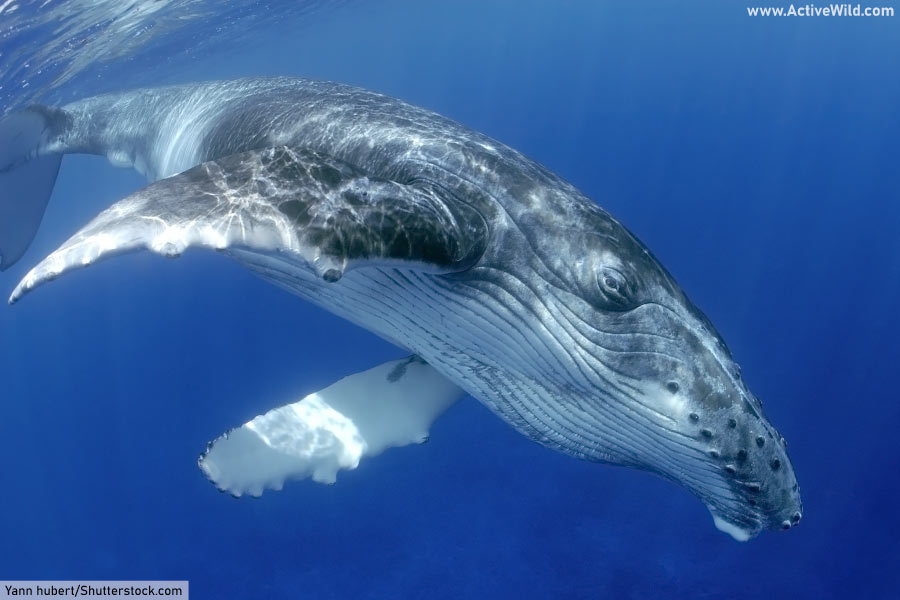
Being warm blooded means that an animal is able to regulate its own body temperature (by shivering, etc.) in order to maintain a constant temperature.
The scientific term for being warm-blooded is endothermic.
Most sharks are cold-blooded. A typical shark’s body lacks the means to control its own temperature, and is reliant on external conditions.
The scientific term for being cold-blooded is ectothermic.
Warm-Blooded Sharks
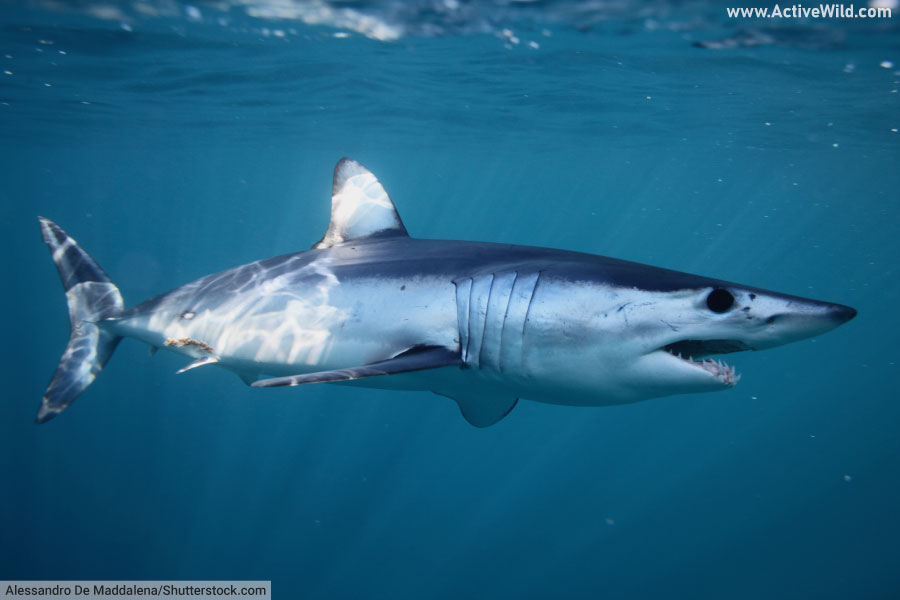
Some sharks in the family Lamnidae (e.g., the great white shark and the two species of mako shark) are warm-blooded, and are able to keep the temperature of their bodies at a different level to that of their surroundings.
Despite being warm-blooded, these sharks are not mammals. The process by which they control the temperature of their bodies is different to that found in mammals.
Sharks Vs Whales
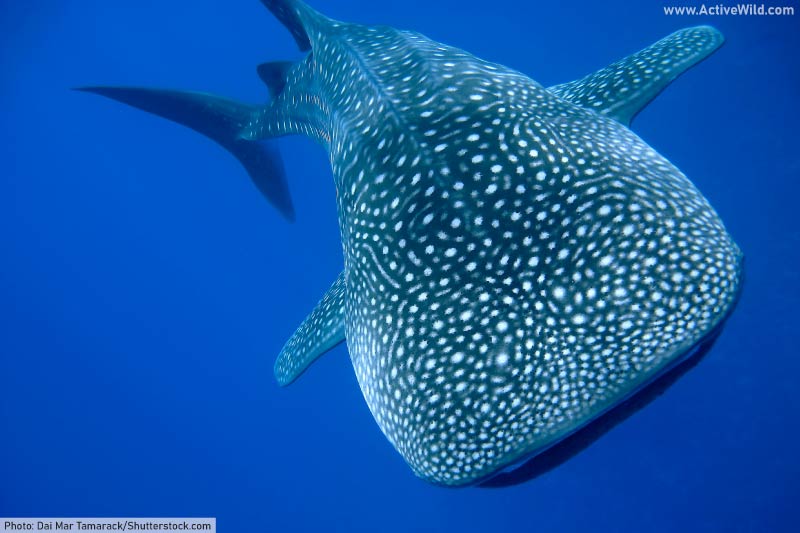
The reason that so many people ask the question "Are sharks mammals?" is that large sharks such as the great white shark resemble aquatic mammals such as whales and dolphins.
The fact that whales – some of which look like sharks – are mammals confuses people into thinking that sharks may be mammals too.
Both sharks and mammals are vertebrates (i.e. they have backbones) and share a common ancestor that lived hundreds of millions of years ago.
Both sharks and whales have smooth, torpedo-shaped bodies for travelling through the water with maximum efficiency. Both propel themselves with paddle-shaped limbs.
In addition, sharks and whales are also (often) the same color!
However, despite those similarities, sharks and cetaceans (aquatic mammals such as whales, dolphins and porpoises) are only very distantly related.
The similarity in body shape (and other characteristics) in sharks and whales is a result of convergent evolution: the development of similar characteristics in unrelated animals.
Another example of convergent evolution are ichthyosaurs; these marine reptiles of the Mesozoic Era resemble the sharks and dolphins of today.
Differences Between Sharks And Whales
- Whereas a shark has fins, a whale's forelimbs are known as "flippers" and its tail is known as a "fluke".
- Fish propel themselves through the water with a side-to-side body motion; a whale's fluke moves up and down.
- Sharks have gills, which extract oxygen from the water; whales have to come up to the surface to breathe air. (Whales breathe air via "blowholes" – openings on the top of their heads which have evolved from nostrils.)
- A shark has a cartilage skeleton; A whale's skeleton is made of bone.
- Sharks are ancient animals that have been swimming the world’s oceans for over 400 million years.
- Compared to sharks, cetaceans (the group of aquatic mammals that includes whales, dolphins and porpoises) are relatively “young” animals, having only appeared around 50 million years ago.
- None of a shark’s ancestors have ever left the sea.
- All living mammals (even whales and dolphins) have evolved from land animals.
Whereas sharks appeared long before the dinosaurs, the first whales and dolphins only appeared millions of years after the dinosaur extinction at the end of the Cretaceous Period.
The ancestors of mammals (and all other land animals) evolved from fish hundreds of millions of years ago.
You can see a list of whale species on this page: Top Ten Biggest Whales, With Pictures & Facts
Whale Hair
Although whales appear to be hairless, they do have hair follicles (the organs from which hair grows), which are often located on the face, around the mouth. The young of some whale species have hair before being born.
Sharks don’t have hair. Their bodies are covered with tough scales that enable them to swim quietly and efficiently.
Is A Shark A Mammal? Live Young
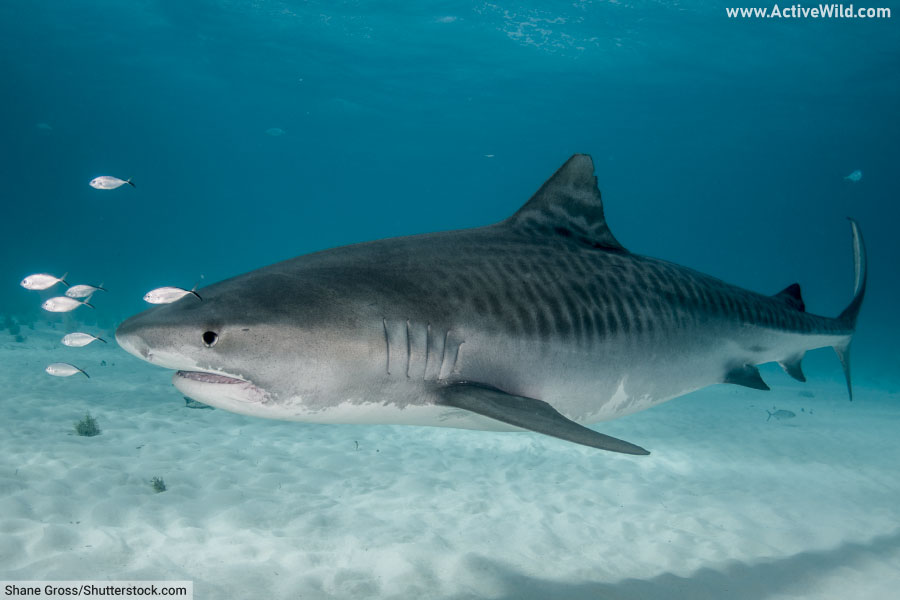
As we've found, one characteristic of mammals is giving birth to live young (rather than laying eggs). Only five mammal species reproduce by laying eggs.
The five mammals that lay eggs are the platypus, and the four species of echidna (spiny anteaters). These five species are known as monotremes.
Like mammals – and unlike many other fish – many sharks give birth to live young. So in this respect sharks are similar to mammals.
However, there are differences in how the unborn sharks receive nourishment while they are growing inside the mother (often the young sharks grow in eggs that hatch inside the mother's body, a process known as Ovoviviparity).
Around one quarter of shark species lay eggs. Shark eggs are protected by tough, leathery egg cases known as "mermaid's purses".
You can find out more about the fascinating life cycle of a shark on these pages:
Breathing
Mammals breathe using lungs, whereas most fish (including sharks) breathe with gills. Gills are organs that extract oxygen from water.
A shark can spend its whole life underwater; an aquatic mammal such as a whale has to come up to the surface to breathe at regular intervals.
Are Sharks Mammals?
As we’ve found, although sharks are vertebrates, and most give birth to live young – they lack many other mammalian characteristics.
Sharks don’t feed their young with milk, neither do they have hair or lungs. In addition, the vast majority of sharks are cold-blooded, whereas mammals are warm blooded.
Therefore, sharks aren’t mammals.
Why Sharks Are Fish
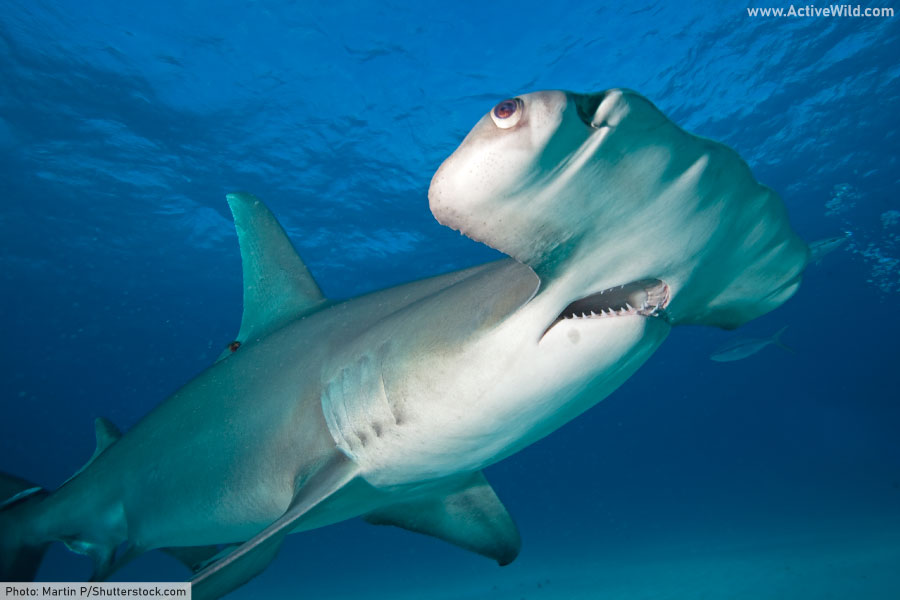
Fish are vertebrates (animals with a backbone) that have gills (although some fish can breathe using other methods) and fins. These characteristics are found in all sharks.
What type of fish is a shark?
Let's look at the classes of living fish to find out where a shark belongs...
- Agnatha (Jawless Fish)
Jawless fish include hagfish and lampreys. They are eel-like fish, with long, thin bodies.
All sharks have jaws, therefore sharks are not members of this group.
- Osteichthyes (Bony Fish)
95% of fish species are bony fish. Bony fish have skeletons made of bone. Most bony fish have a swim bladder, which is a gas-filled organ that controls the fish’s buoyancy.
A shark doesn’t have a swim bladder, and has to swim to reach the required depth. Therefore, sharks aren't bony fish.
- Chondrichthyes (Cartilaginous Fish)
Chondrichthyes are fish whose skeleton is made of cartilage, rather than bone. (Cartilage is like bone, but more flexible.)
The skeletons of sharks are made of cartilage, therefore sharks belong to the class Chondrichthyes, and are cartilaginous fish.
The scientist responsible for much of the way we think about animal classification is Swedish naturalist Carl Linnaeus (1707–1778). The Linnean Society is the world's oldest biological society, and is named after him. (Website)
Are Sharks Mammals or Fish? Conclusion
Are sharks mammals or fish? On this page we’ve found that sharks are not mammals due to a number of reasons:
- Sharks don’t produce milk to feed their young.
- Most sharks are cold-blooded (ectothermic) and cannot regulate their own body temperatures.
- Sharks don’t have lungs, and breathe using gills.
- Sharks don’t have hair. Their bodies are covered in hard scales.
We’ve also found that sharks are fish.
In addition, because sharks don’t have swim bladders and their skeletons are made of cartilage rather than bone, sharks are cartilaginous fish, of class Chondrichthyes.

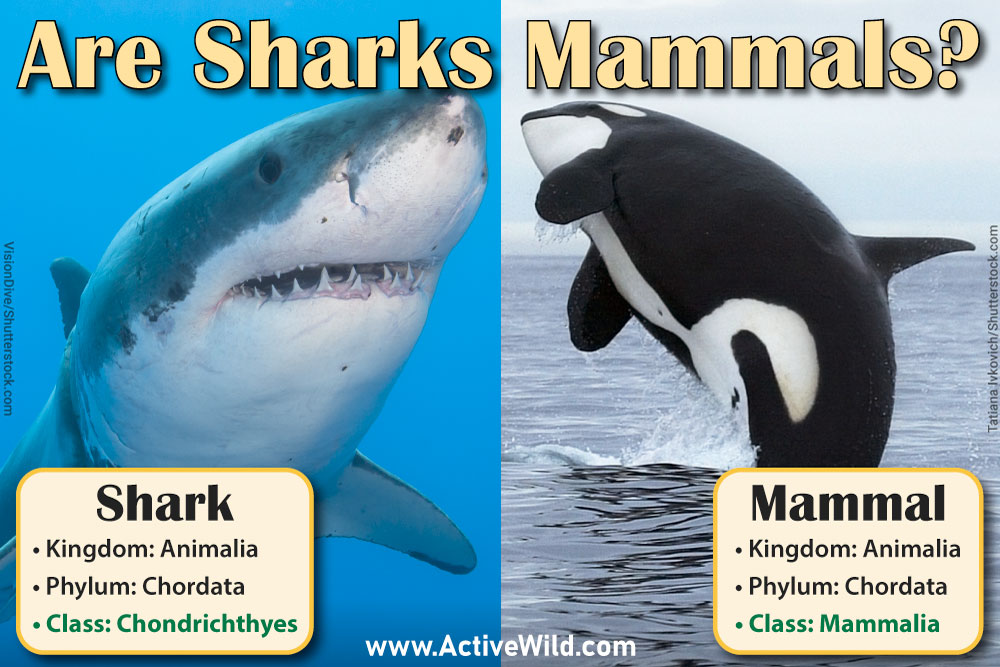

Why are sharks fishes??
what species is a shark?
Hi Josh,
Good question! A shark isn’t a single species. The sharks are a group of species.
In fact, there are currently 512 different species of shark (and a few more that aren’t officially recognized).
These include the whale shark (the biggest species of shark) and the fearsome great white shark.
All sharks have certain characteristics in common (for example, a skeleton made of cartilage rather than bone).
Sharks are old, old animals; they’ve been around for more than 420 million years. That’s way before the first dinosaurs appeared.
If you go back far enough in the family tree of any shark that’s alive today – whether it’s a hammerhead shark or a tiger shark or any other species – then you’ll find that they all have the same ancestors!
Thank you for your question and I hope this helps! 🙂